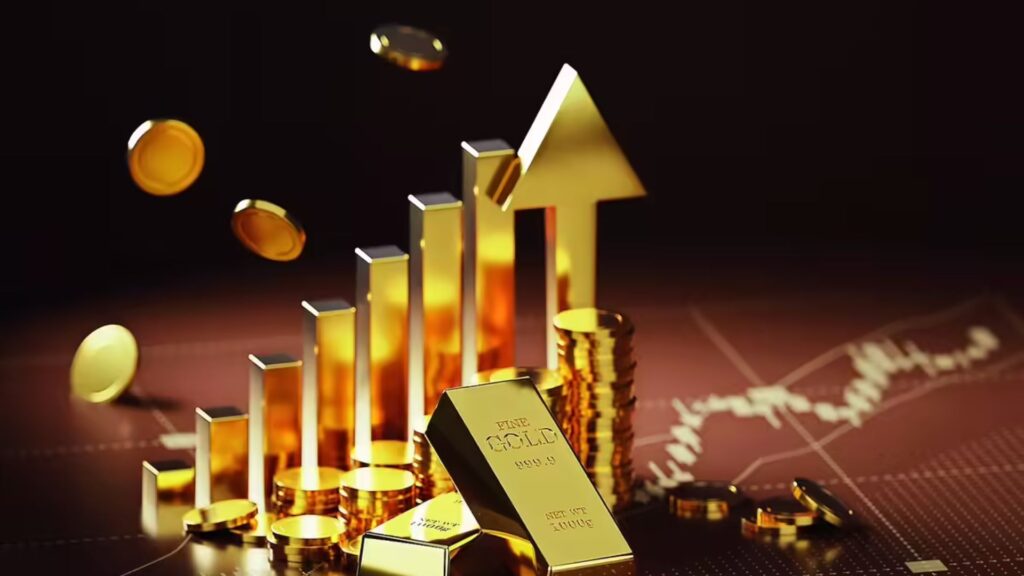Local gold prices in India are likely to maintain an upward trajectory in the second half of 2025, potentially breaching the ₹1,00,000 per 10 grams mark, according to a recent report by ICICI Bank Global Markets.
The report suggests that despite a lull in global prices, domestic gold rates have remained resilient, aided by a slight depreciation of the Indian rupee and strong investment demand. In June, gold prices in India rose by 0.6%, even as the rupee weakened marginally by 0.2%.
“Local gold prices are expected to continue trading with an upside bias, transitioning from the current range of ₹96,500–₹98,500 per 10 grams to a higher band of ₹98,500–₹1,00,000 in the latter half of 2025,” the report noted.
Despite firm prices, the volume of gold imports declined sequentially, indicating softening physical demand. Imports stood at USD 2.5 billion in May, down from USD 3.1 billion in April. However, investment appetite remained strong. Data from the Association of Mutual Funds in India (AMFI) showed a net inflow of ₹2.92 billion into gold Exchange Traded Funds (ETFs) in May, rebounding after two months of outflows.
Globally, gold prices have seen some consolidation in recent months, with the rally pausing as investor focus shifted from safe-haven assets due to improving geopolitical conditions. However, year-to-date, global gold prices are still up by 28%.
The global investment landscape continues to support gold, with holdings in the SPDR Gold ETF—the world’s largest gold-backed exchange-traded fund—increasing from 930 tonnes on June 1 to 948 tonnes by July 1. In addition, speculative net long positions rose by approximately 13,000 lots in the past month, signaling positive sentiment among traders.
A key factor behind the easing in gold’s safe-haven demand is the recent ceasefire between Israel and Iran, which has improved overall market sentiment. Furthermore, the United States has made strides in trade negotiations, finalizing deals with the UK and Vietnam, and progressing talks with Japan, India, and the European Union. A framework agreement has also been reached between the US and China, with a formal trade deal expected by August.
“The easing of geopolitical tensions and progress on trade fronts has reduced the urgency for gold as a hedge against global uncertainty,” the report stated.
While jewellery demand has shown signs of weakening amid elevated prices, investment-driven buying continues to lend support to the yellow metal. Analysts believe this trend may keep gold prices buoyant in the months ahead, especially if the rupee continues to show signs of weakness or inflation concerns resurface.
